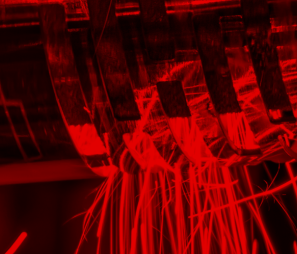Maximise Data Collection with Whole System Monitoring : Manufacturing strives to become a predictable process yet is often undermined by unexpected problems. And both time and money can quickly add up in attempt to discover and resolve the cause. With extensive plant and machinery working together, the interactions within a process can be complex and difficult to assess. A viable solution is using a whole system monitoring approach that works to eliminate guesswork, pinpoint the true issue and maximise data collection. Taking on the bold approach of monitoring the entire system provides a clearer picture for engineers that fills in coverage gaps and reveals hidden problems. There are 3 steps to implementing this approach and drastically improving existing monitoring efforts.
Dig deeper – Include equipment in inaccessible locations
Do you have locations that difficult to get to but could benefit from monitoring? Some sensing solutions need to have a power source available or require routine maintenance to function (battery changes). This makes inaccessible locations with little infrastructure a difficult place to monitor and maintain. The solution is to find a sensor that thrives in these locations. Energy harvesting sensors need only the tiniest bit of energy to harvest. This energy can be found even in remote places with little infrastructure. For example, locations that are difficult to access may include forbidding tunnels, roof tops and chimney stacks, and installed equipment that is far-far-away. Consequently, these are the exact places that could greatly benefit from monitoring but where you don’t want to worry about changing batteries. Furthermore, energy harvesting sensors power themselves continually and are always on. Encompassing all equipment is a crucial step for implementing whole system monitoring and now it is possible.
Extend reach – Monitor more components in parallel
You probably already have a monitoring system in place, however most sensing solutions come with fixed capabilities. At this point, you may be only scratching the surface. Rather than replacing existing systems, upgrading capabilities is another step to achieving whole system monitoring. Again, self-powered, energy harvesting sensors are designed to complement in-place systems and fill in the gaps. Energy harvesting sensors can monitor more components at one time because they are not constrained like battery-powered sensors that ‘do less’ in order to have a longer life. Simple plug and play options allow for an extension of the number of machines and performance characteristics monitored. As a result, engineers receive a rich dataset that creates a complete picture and can be used immediately.
Receive alerts – Oversee your whole system in real time
Finally, machines and equipment need maintenance to keep them going strong. Whole system monitoring gives engineers the advantage of viewing equipment as needing predictive and/or preventative maintenance. Engineers can identify which machines perform well with a routine, scheduled service and which machines carry on well until something goes wrong. And before that ‘something’ goes wrong, dashboard analytics will alert and notify engineers of any inconsistencies that could lead to mechanical production failures.
____
DCO Systems offer self-powering, energy harvesting sensors that are perfect for inaccessible locations, monitor more components at one time and let you know when something’s wrong. DCO’s whole system monitoring is a cost-effective solution and takes the guesswork out of diagnosing problems through a rich, robust dataset. To get started with DCO’s affordable monitoring tools, go to dcosystems.co.uk, email: info@dcosystems.co.uk or call: 01285 359059.
Manufacturing & Engineering Magazine | The Home of Manufacturing Industry News
















